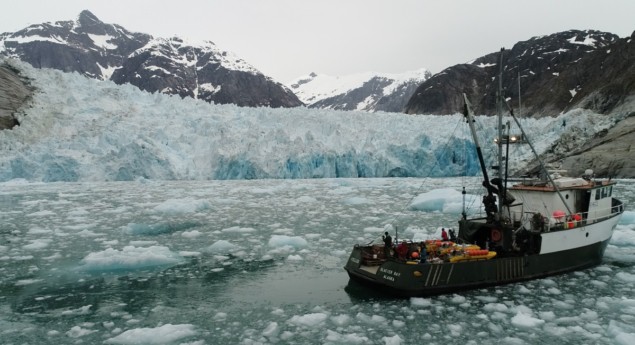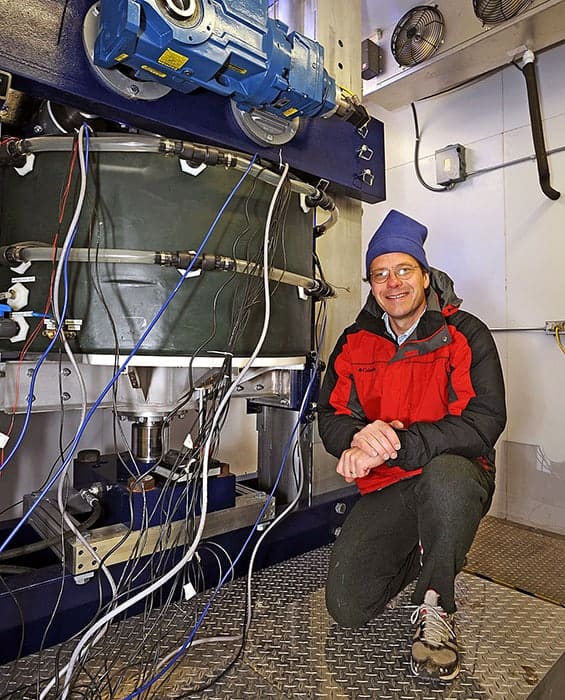
The submarine surface of Alaska’s LeConte glacier could be melting around 100 times faster than previously thought, direct observations have revealed. A US team led by David Sutherland at the University of Oregon came to this conclusion after monitoring the submerged portion of the glacier in a multibeam sonar survey. Their results highlight a pressing need to update existing models of glacial melting.
Commonly found on the coastlines of Greenland and Antarctica, tidewater glaciers form physical boundaries between oceans and continental ice sheets in high-latitude environments. They are known to be highly dynamic, with changes induced by submarine melting driving cycles of advance and retreat. The behaviour of these glaciers have a significant impact on factors including sea level, global ocean circulation, and the productivity of ecosystems.
Since the submarine interfaces of tidewater glaciers are so difficult to access, direct observations of their melting behaviours are sparse. This means that researchers predicting the impacts of climate change-driven ice losses on oceans and the atmosphere must rely on models with parameters based on limited observations.
To address this shortcoming, Sutherland’s team argues that models must be updated to include parameters such as melting rates along the vertical faces of tidewater glaciers. Such melting can form overhanging shelves of ice, which can eventually collapse under gravity to form icebergs; dramatically increasing ice loss.
Multibeam sonar surveys
In their study, Sutherland’s team carried out two week-long multibeam sonar surveys on the submerged face of the LeConte tidewater glacier in south-eastern Alaska, in August 2016 and May 2017. The 3D images they gathered revealed the complex shape of LeConte’s submerged faced to metre-scale resolutions.

Fast-moving glaciers slide more easily
By analysing time-varying changes in the glacier-ocean interface, Sutherland and colleagues discovered that significant melting occurred at the ocean’s surface in both spring and summer. However, they also observed a significant increase in melting of the deepest parts of the glacier during the summer, resulting in overhanging ice shelves at intermediate depths, which were vulnerable to collapse. They concluded that this pattern arose as sediment-laden meltwater penetrated through the glacier, emerging at its submarine face. This exiting runoff, which increased with depth, then created buoyant, turbulent plumes, which enhanced melting rates along the face of the glacier.
Although the team observed highly variable levels of melting, their results confirmed that overall, the submarine face of the LeConte glacier is melting up to two orders of magnitude faster than previous theories have predicted. With melting rates of tidewater glaciers universally predicted to accelerate due to climate change, the researchers’ insights into melting mechanisms could prove crucial in building reliable, parameterized models of its global impacts.
The research is described in Science.



